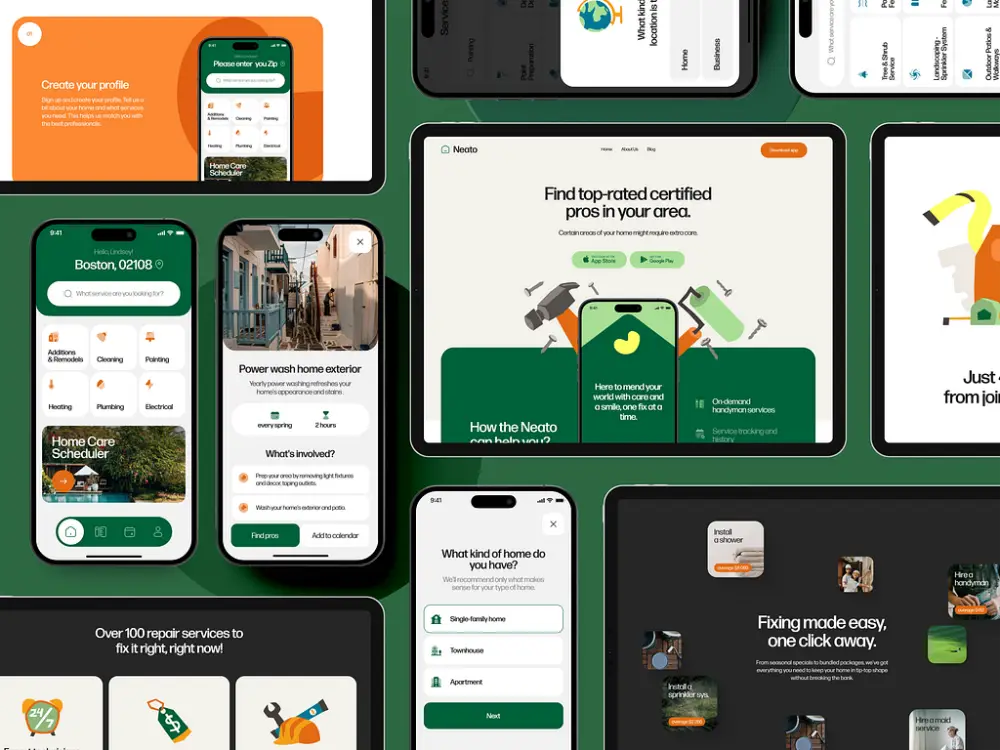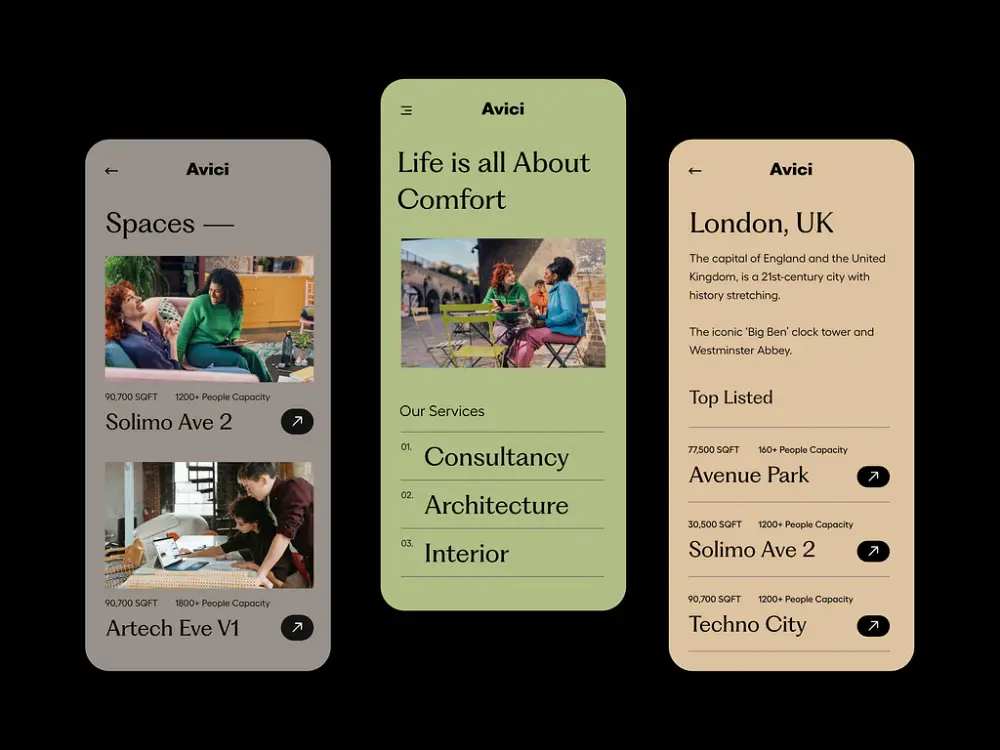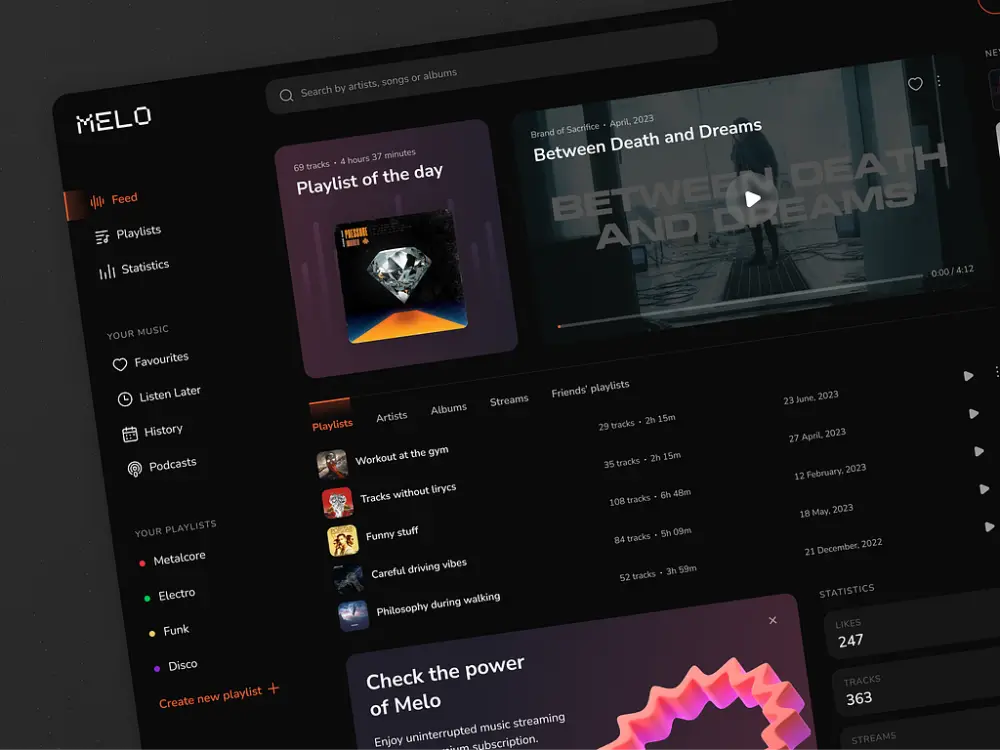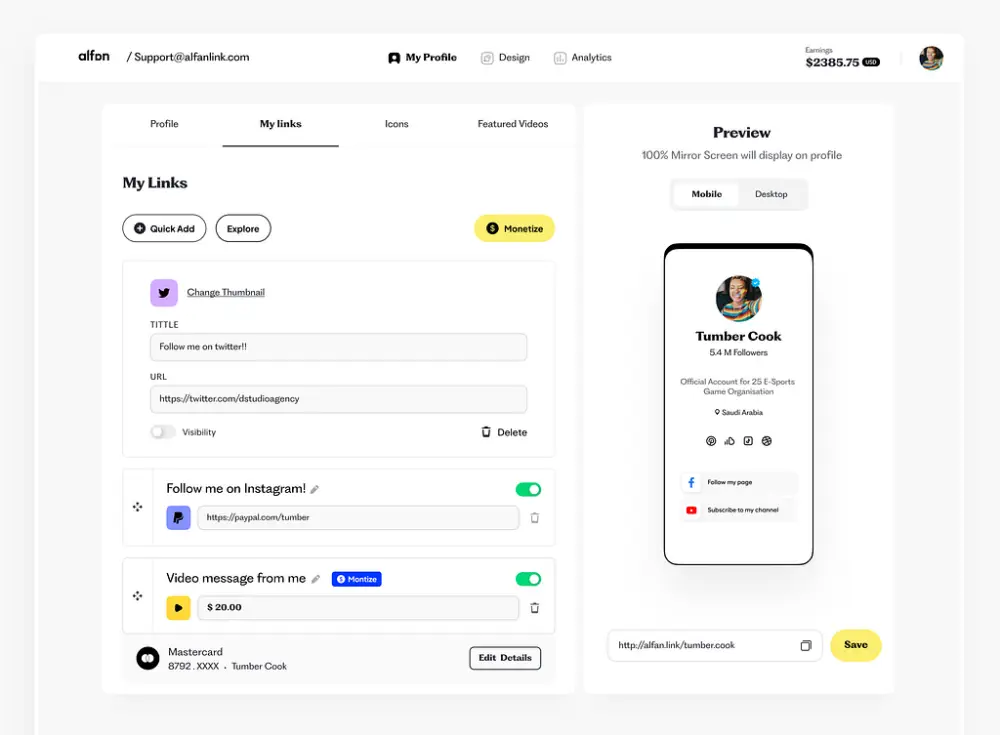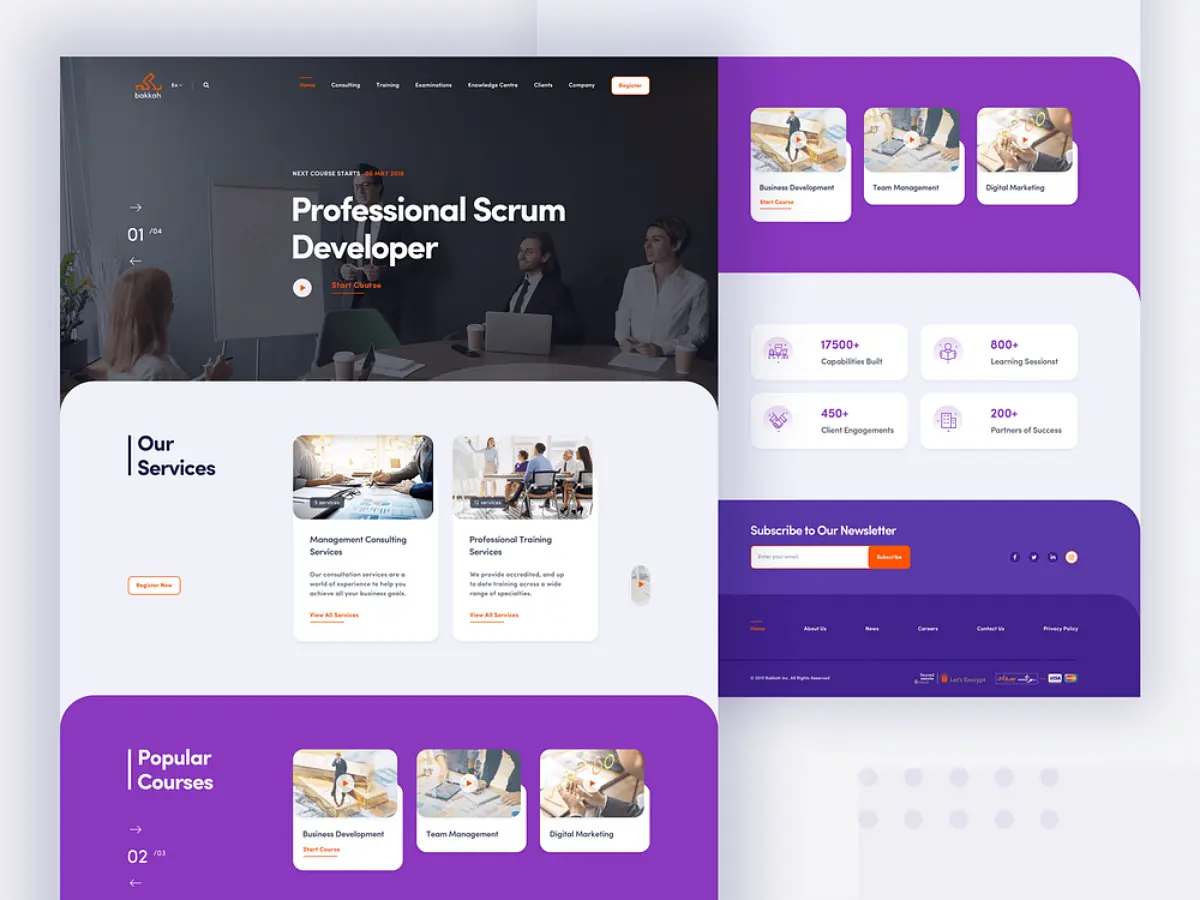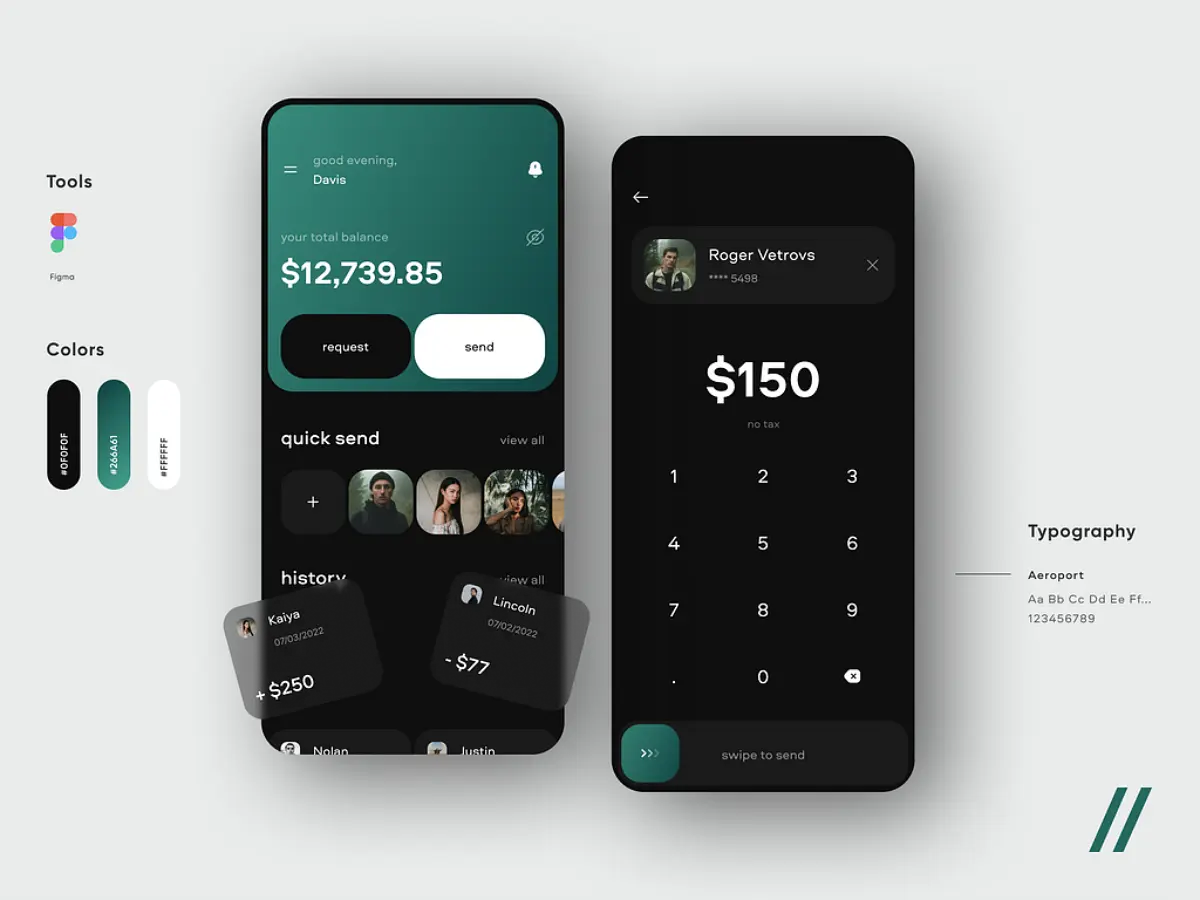The Ultimate Guide For Web App Development Cost In 2025
- TECHVIFY Team
- 0 Comments
In today’s digital age, having a web app can significantly boost your business, streamline operations, and enhance user engagement. But one of the first questions that come to mind when embarking on this journey is, “How much does it cost to make a web app?”
Crafting a web app is not just about writing code; it’s about creating an interactive, user-friendly experience that solves problems and provides value. Whether you’re a startup aiming to disrupt the market or an established business looking to expand your digital footprint, understanding the cost of web app development is crucial for budgeting and planning.
In this article, we’ll dive into the factors that influence the cost of web app development, from design and functionality to technology stack and development team. But first, let’s explore the multitude of benefits that come with investing in a web app:
- Enhanced Accessibility: Web apps can be accessed from any device with an internet connection, allowing users to engage with your services anytime, anywhere.
- Improved User Experience: A well-designed web app offers a seamless, intuitive experience that can boost customer satisfaction and loyalty.
- Scalability: Web apps can grow with your business, easily adapting to increased traffic and new features without major overhauls.
- Cross-Platform Compatibility: Unlike native apps, web apps work across various platforms and devices, reducing development and maintenance costs.
- Cost-Effective Marketing: With integrated analytics, you can track user behavior and tailor your marketing efforts for better ROI.
Now, let’s break down the elements that determine the cost of creating a web app, ensuring you have a clear roadmap for your development journey.
1. When Should You Build a Web App Instead of a Mobile App?
In today’s world of digitalization, people spend more time on their smartphones and tablets, often using these devices as their primary means of accessing the internet. Web applications have emerged as one of the best solutions for providing fast and efficient services across all platforms without needing specific device models.
Web apps enable businesses to offer users information while automating various business processes at higher levels. For instance, consumers can process transactions, make reservations, edit documents, or simply access product information.
1.1. Use Cases: When It’s Better to Build a Web App
- Cross-Platform Compatibility: A web app works on any device or operating system that supports web browsing, be it PC, Linux, Android, Mac, or iOS.
- No App Store Approval Needed: Developing a web app bypasses the need for approval from app stores like Google Play, Apple App Store, or Amazon App Store.
- Cost and Time Efficiency: Web apps are simpler to develop with a single codebase, leading to reduced development time and fewer developers needed compared to mobile apps.
- Following Tech Trends: Progressive Web Applications (PWAs) are the future of multi-platform development. They are budget-friendly, easy to develop, and maintain.
- Broad Accessibility: Since web apps are internet-based, users don’t need to download or install anything on their devices, making it easier to reach a larger audience.
1.2. Use Cases: When It’s Better to Build a Mobile App
- Hardware Utilization: If your app needs to use specific mobile hardware, such as the camera or flashlight.
- Gaming: Games that require significant memory, like Pokémon GO, are more suited for mobile apps.
- Personal Services: Apps like Uber and Gmail offer a better user experience on mobile compared to their web versions.
- Offline Usage: If your app needs to function offline, a mobile app is the better choice.
- Mobile-First Audience: When targeting users who primarily use mobile devices or don’t have access to a computer.
By understanding these scenarios, you can make an informed decision on whether to develop a web application or a mobile application, ensuring that your investment aligns with your business goals and user needs.
Looking to Develop a Web Application?
Contact TECHVIFY, Vietnam’s Leading Offshore Software Development & Outsourcing Company, for expert consultation and web app development services.
2. What Factors Affect Web App Development Cost?
When planning to create a web app, understanding the factors that influence its cost is essential. The type of web app you choose to develop plays a significant role in determining the overall budget. Let’s explore the different types of web apps and how they impact the Web App Development Cost.
2.1. Types of Web App
Choosing the right type of web app is crucial as it affects not only the user experience but also the development complexity and cost. Here are the three main types of web apps:
Multi-Page Applications (MPAs)
Multi-Page Applications are traditional web apps where each interaction or request loads a new page from the server. This structure is ideal for complex applications that require a lot of content, such as e-commerce sites or corporate portals. MPAs are beneficial for SEO because each page can be optimized individually, making it easier to rank on search engines. However, they often have slower performance due to multiple page reloads and can be more complex to develop and maintain.
Examples:
- Amazon: Each product click or category selection loads a new page, providing extensive content and detailed information.
- eBay: Similar to Amazon, eBay loads new pages for each product, auction, or user action, ensuring comprehensive detail and user interaction.
- LinkedIn: Professional networking site LinkedIn uses MPA architecture to handle its extensive content, such as profiles, job listings, and user interactions.
Single-Page Applications (SPAs)
Single-Page Applications load a single HTML page and dynamically update content as the user interacts with the app. This provides a seamless and fast user experience, as there are fewer page reloads. SPAs are known for their speed and responsiveness, making them ideal for applications that require real-time updates and user interactions. However, they can be more challenging to optimize for SEO and may have a higher initial development cost due to their complexity.
Examples:
- Gmail: Gmail dynamically loads new content without refreshing the entire page, offering a smooth and fast user experience.
- Google Maps: This application provides real-time updates and interactions without needing to reload the page, making it highly intuitive and user-friendly.
- Trello: The project management tool Trello uses SPA architecture to allow users to manage tasks and projects in real time without page reloads.
Progressive Web Apps (PWAs)
Progressive Web Apps combine the best features of web and mobile apps, offering offline capabilities, push notifications, and fast loading times. PWAs provide a native app-like experience within a web browser and are highly versatile. They are cost-effective as they eliminate the need for separate mobile and web apps. However, they may have limited support on older browsers and can be complex to develop and maintain.
Examples:
- Spotify: Spotify’s PWA offers a seamless music streaming experience with offline capabilities and fast performance within a web browser.
- Pinterest: Pinterest’s PWA provides a fast and engaging user experience, even on slow networks, with offline capabilities.
- Starbucks: The Starbucks PWA allows users to browse the menu, customize their orders, and add items to their cart, even with limited internet connectivity.
Understanding these types of web apps and their respective advantages and examples helps in making an informed decision, ultimately affecting the overall Web App Development Cost.
2.2. Scope of Work
The first major factor influencing the cost of web app development is the app’s functionality. Whether you’re creating a straightforward online store, a sleek brochure site, or a sophisticated system like hotel management software, the scope of work will significantly affect the budget. Consider if your app will be a standalone solution or if it requires third-party integrations such as payment systems or GPS navigation.
The complexity of your web app directly impacts development time and cost. Integrating various APIs, managing databases, ensuring reliable hosting, and achieving mobile compatibility all add layers of complexity. The more intricate the web app, the longer it will take to develop, which naturally increases the cost.
Don’t overlook the importance of code quality. If the development team is under tight deadlines, they might not have the time to write clear and high-quality code, potentially leading to bugs and issues cropping up sooner than expected.
Finally, remember that project requirements often evolve. As your audience grows, you may need to introduce new features and design elements. These changes can also affect the overall web application price, so it’s wise to plan for some flexibility in your budget.
2.3. UI/UX Design
The design of your web app is crucial for both aesthetics and user experience, significantly impacting its cost. Here are the key factors to consider:
First Impressions and Usability:
- Attract and Retain Users: A well-designed UI/UX can make your app more intuitive and enjoyable, helping to attract and retain users.
- User Journey: Effective design isn’t just about looks; it’s about creating a seamless and efficient user journey.
Design Complexity:
- Custom Graphics and Animations: These elements can greatly enhance the user experience but require more design and development time, increasing costs.
- Interactive Elements: Adding interactive features can make your app more engaging but adds to the complexity and cost.
- Responsive Design: Ensuring your app works well on various devices and screen sizes adds another layer of complexity and cost.
Usability Testing and Iterative Improvements:
- User Feedback: Conducting usability testing to gather feedback is essential for understanding user needs and improving the design.
- Iterative Design: Making necessary adjustments based on user feedback is crucial for refining the app. This iterative process can increase initial costs but is an investment in the app’s long-term success.
In summary, investing in high-quality UI/UX design is essential for the success of your web app. This involves careful planning, skilled designers, and thorough testing, all of which contribute to the overall development cost.
Learn More On:
2.4. Hiring Options
Choosing the right hiring option for your web app development is like selecting the perfect ingredients for a recipe – it can significantly influence the cost, quality, and timeline of your project. Let’s dive into the three main options: Freelancers, In-House Teams, and Outsourcing, and see what each brings to the table.
Freelancers
Freelancers can be the spice of your development project, adding just the right flavor when needed. However, they come with their own set of considerations.
Advantages:
- Cost-Effective: Like finding a great deal at a farmer’s market, freelancers typically cost less than full-time employees or agencies.
- Specialized Skills: Freelancers often bring unique, specialized skills to the table, perfect for specific tasks.
Disadvantages:
- Reliability: Freelancers might juggle multiple projects, potentially causing delays or inconsistent availability, much like waiting for a busy food truck.
- Quality Control: Ensuring consistent quality can be challenging, akin to getting the same dish just right every time.
- Communication: Coordinating with freelancers, especially across different time zones, can feel like playing a game of telephone.
In-House Teams
An in-house team is like having a professional kitchen staff – full control over the process but with higher costs and commitments.
Advantages:
- Control and Communication: You have direct oversight, making it easy to manage and quickly address issues, like having a head chef on site.
- Commitment: Full-time employees are more likely to be invested in the project’s success, much like a loyal kitchen crew.
Disadvantages:
- High Cost: Salaries, benefits, and overhead can add up quickly, similar to maintaining a high-end restaurant.
- Limited Talent Pool: You might be limited to local talent, which might not always meet your needs, like sourcing local ingredients that aren’t always in season.
- Scalability: Scaling the team up or down based on project needs can be challenging, like adjusting a menu on the fly.
Outsourcing
Outsourcing is like catering your event – flexible, cost-effective, and giving you access to a wider range of culinary talent.
- Cost-Effective: Often cheaper than maintaining an in-house team, especially with offshore development, like getting a gourmet meal at a fraction of the price.
- Flexibility: Easy to scale the team up or down as project needs change, much like adjusting your catering order based on guest count.
- Access to Talent: Leverage highly skilled software engineers from around the world, akin to having access to top chefs globally.
In summary, each hiring option has its own unique blend of pros and cons, impacting your project’s cost, quality, and flexibility. Choosing the right option depends on your specific needs, budget, and long-term goals, much like selecting the perfect ingredients for a memorable dish.
2.5. Location of the Development Team
The location of your development team can greatly influence the cost and quality of your project. Offshore development is often cheaper than local development, which can lead to significant savings.
In regions like the USA, Canada, and Australia, the cost of software development ranges from $80 to $250 per hour, the highest rates globally. It might seem that higher costs guarantee better quality, but this is not always the case. Most reputable agencies, whether local or offshore, prioritize their reputation and maintain high-quality standards. If they lack specific expertise, they will quickly find professionals who have it.
Below is a table comparing the hourly rates for various roles across different regions:
| Title of Employee | United States | Latin America | Eastern Europe | Asia |
|---|---|---|---|---|
| Business Analyst | $110 – $205 | $45 – $55 | $40 – $63 | $30 – $42 |
| Architect | $198 – $292 | $60 – $72 | $50 – $77 | $35 – $48 |
| Project Manager | $133 – $233 | $55 – $66 | $45 – $70 | $35 – $48 |
| Jr. Developer | $105 – $111 | $35 – $44 | $25 – $42 | $18 – $24 |
| Mid-Level Developer | $132 – $140 | $30 – $52 | $35 – $56 | $24 – $35 |
| Sr. Developer | $154 – $163 | $45 – $55 | $45 – $70 | $30 – $42 |
| Lead Developer | $176 – $187 | $50 – $61 | $45 – $70 | $30 – $42 |
| Junior QA | $77 – $81 | $30 – $39 | $25 – $42 | $15 – $24 |
| Mid-Level QA | $99 – $105 | $35 – $44 | $30 – $56 | $20 – $30 |
| Senior QA | $143 – $169 | $40 – $50 | $40 – $63 | $25 – $36 |
| Graphic Designer | $79 – $163 | $40 – $44 | $35 – $56 | $25 – $36 |
Let’s Talk Web App Development
A consultation with the Client Relationship Manager at TECHVIFY, without any commitment from your side, will give you:
- Structured and clear vision of your future web application
- Information about how our software development company guarantees 100% on-time and on-budget delivery
- Recommendations for choosing the tech stack
- Advice on further steps
- Business-side recommendations
- Rough project estimation on web app development
TECHVIFY is right where you need. Contact us now for further consultation:
3. Ultimate Guide For Web App Development Cost
Embarking on a web app development journey from scratch involves weaving together the expertise of various specialists, including developers, UI/UX designers, project managers, business analysts, QA engineers, DevOps engineers, and team leads. The average cost of developing a web application can start at $5,000 and soar beyond $250,000 for a fully-featured, complex web app. Let’s break down the costs based on the complexity of the web app:
3.1. Simple Web Apps
Think of simple web apps as the quick-and-easy recipes of the web development world. These are websites with a basic set of functions such as landing pages and simple online stores. With minimal content and interactive elements, they require less development time, typically up to a month.
- Personal Blogs: Basic blogging platforms with minimal interactive features.
- Portfolio Websites: Showcases for freelancers and professionals to display their work.
- Basic E-commerce Stores: Simple online shops with limited product catalogs.
- Event Landing Pages: Informational pages for events, conferences, or meetups.
- Corporate Brochure Websites: Static websites providing company information and services.
3.2. Medium Web Applications
Medium web applications are akin to gourmet meals that require more ingredients and preparation. They are more challenging to build, often containing interactive pages and abundant content. Development time for these apps spans up to 3-4 months.
- E-commerce Websites: Advanced online stores with multiple product categories and payment gateways.
- Prototypes of Internet Portals: Websites offering a variety of content and services, such as news websites.
- Web Apps for Small Companies: Custom solutions for small businesses, including booking systems.
- Educational Platforms: Websites offering online courses and learning materials.
- Community Forums: Platforms for online discussions and community building.
3.3. Complex Web Applications
Complex web applications are the multi-course banquets of the development world, featuring exclusive content management systems (CMS), intricate designs, and a high level of complexity. These apps are often profit-oriented or designed to automate extensive business processes. Developing such sophisticated web applications can take up to 6 months of intensive work.
- Custom CRM Systems: Tailored customer relationship management systems for large enterprises.
- Enterprise Resource Planning (ERP) Systems: Comprehensive business management software.
- Social Media Platforms: Full-featured social networking sites with user profiles, messaging, and content sharing.
- Advanced E-commerce Marketplaces: Platforms like Amazon or eBay with extensive features for sellers and buyers.
- Financial Management Systems: Complex applications for managing finances, investments, and accounting.
In summary, the cost of developing a web app varies widely based on its complexity and the expertise required. Whether you’re looking for a simple landing page or a complex, custom-built solution, understanding these cost brackets can help you plan and budget effectively for your project.
| Simple | Medium | Complex |
|---|---|---|
| Info pages | Info pages | Info pages |
| Simple search | Search | Search |
| Contact forms | Contact forms | Contact forms |
| 3rd party integrations | 3rd party integrations | |
| Payments | Payments | |
| User accounts | User accounts | |
| User management | ||
| Content management | ||
| Additional sub-projects | ||
| $6,000 – $15,000 | $15,000 – $36,000 | $36,000 – $150,000+ |
Dreaming of a Cutting-Edge Web Application?
Partner with TECHVIFY, Vietnam’s Leading Offshore Software Development & Outsourcing Company, for expert consultation and top-tier web app development services.
4. How to Reduce Web App Development Costs
Navigating the complexities of web app development costs can be challenging, but there are strategic ways to manage and mitigate these expenses effectively. Here are some methods to consider:
4.1. Start with an MVP
Developing a Minimum Viable Product (MVP) is a smart way to get your web app off the ground without a massive initial investment. This approach enables you to launch a functional product with essential features and gather valuable user feedback.
- Validate your idea: An MVP allows you to test your concept with real users before committing to full-scale development.
- Adjust based on feedback: Utilize user feedback to make necessary adjustments and prioritize features for future updates.
4.2. Engage in the Discovery Phase
Collaborating with your IT provider during the Discovery phase is crucial. This stage involves in-depth communication with a team of experts who will analyze your business needs, define product requirements, and create a clear implementation roadmap.
- Structured project planning: The Discovery phase ensures all project details are well-organized, reducing the chances of costly misunderstandings later.
- Accurate cost estimation: By thoroughly understanding the project scope, you can receive a precise web app development cost estimate.
4.3. Leverage Third-Party Services
Instead of building every feature from scratch, consider integrating third-party tools and services. This tactic can save both time and money while enhancing your app’s functionality.
- Payment processing: Use APIs like PayPal, Stripe, or Google Pay to handle transactions securely and efficiently.
- Additional features: Integrate third-party services for maps, content management systems (CMS), chat functionalities, and more to enrich your app’s user experience.
Learn More On:
5. How We Make Estimations at TECHVIFY
At TECHVIFY, we approach each project with the dedication and care we would give our own. Our goal is to deeply understand users’ needs and create solutions that meet and exceed expectations. Our cross-functional development team meticulously follows these app development stages to ensure top-notch results:
- Product requirements analysis
- Prototyping
- Design
- Development
- QA
- Launch and Support
While it may seem like a daunting amount of work, this thorough process ensures that your app not only meets your requirements but also stays within budget. Our commitment to excellence means we leave no stone unturned in delivering a product you can be proud of.
TECHVIFY – Global AI & Software Solutions Company
From Startups to Industry Leaders: TECHVIFY prioritizes results, not just deliverables. Accelerate your time to market and see ROI early with high-performing teams, AI (including GenAI) Software Solutions, and ODC (Offshore Development Center) services.
- Email: [email protected]
- Phone: (+84)24.77762.666




